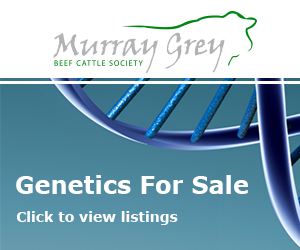Quality of milk-fed beef earns award
October 27, 2017Courtesy The West Australian
Securing a premium market for high-quality milk-fed beef is the focus of Cowaramup beef producers Leanne and Shane Ablett.
Their Murray Grey and Black Angus breeding herd — run with sons Jack, 20, and Max, 16 — produces 65 to 70 head of progeny each year that are supplied directly to Woolworths.
Consistently high Meat Standards Australia Index results — in the top 5 per cent of MSA-graded cattle in WA in 2015-16 and 2016-17 — has led to the family winning this year’s MSA Excellence in Eating Quality Most Outstanding Beef Producer Award for WA.
The award reflects the family’s efforts on improved breeding selection, strict culling of non-performing stock and quality feeding. Mrs Ablett said being able to produce milk-fed beef with high eating quality boiled down to a philosophy of “weed, feed and breed”.
“We target our genetic selection at high growth rates, good eye muscle and low birth weight, we get rid of any poor performers in the herd and we ensure the cattle have good feed,” she said.
“Animals are treated quietly to reduce stress and the calves are kept with their mums until the last minute.”
The Abletts are under-stocked compared to the district average, running their 70 breeding cows on 125ha of pasture in a high-rainfall region, with the property being run by the family for 78 years.
The property receives about 950mm of annual rainfall, mostly in winter, and has improved pastures on predominantly loam and gravel soil types.
Calving is in February and progeny are turned off into the Woolworths supermarket supply chain for processing from November to January at a target liveweight of 400kg (in a range of 380-420kg).
“Our stock agent has been integral in setting up and managing our relationship with the buyer since 2009,” Mrs Ablett said.
“We needed to become MSA accredited to supply Woolworths and we have now been part of this eating quality system for more than a decade. It has been central to us being able to access premium prices for our milk-fed beef and vital in providing feedback on processing results that go on to drive improvements we make on-farm.”
Mrs Ablett said monitoring trends in MSA Index results across multiple years had provided insight into the overall eating quality of the family’s beef.
She said they also focused on tracking and improving their meat pH as a measure of animal stress and the success of low-stress handling techniques they used on-farm and through the supply chain.
“Other key attributes of the MSA system that are important to us include carcase weight and fat coverage,” Mrs Ablett said.
“We start weighing the calves in late September to early October and allocate paddocks and feed accordingly.
“Because we have low stock numbers and an abundance of pasture feed in most seasons, we can split and run the cattle in mobs of 20-30 head.
“In the final eight weeks before transport, we fine-tune our feed management — based on regular weighing — and aim for growth rates of at least 1kg/head/day and up to 3-4kg/head/day.”
Mrs Ablett said their target for MSA rib fat measurements was 10-12mm and the family was consistently achieving this, with a long-term average of 10mm.
“This is driven by good genetics, availability of feed and getting the timing of the feed regime right,” she said.
“We are a small, traditional operation and we pride ourselves on being kind to our cattle, which is translating into the production of a top-quality specialist milk-fed vealer product.”






